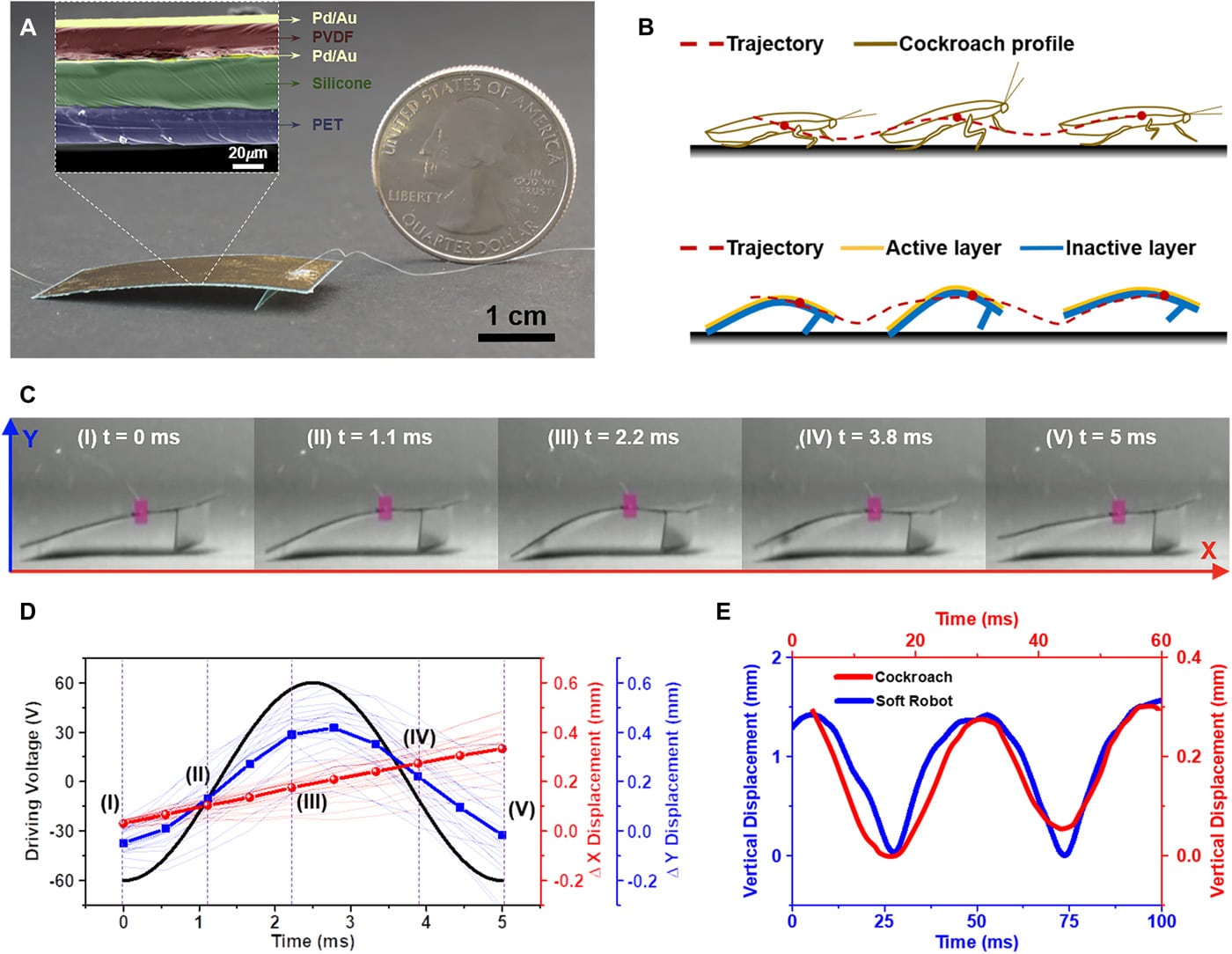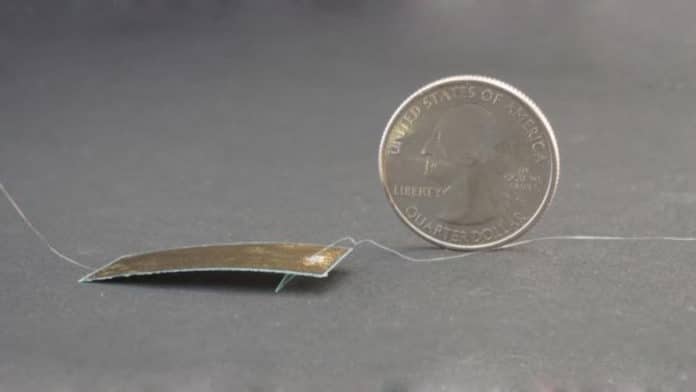Unlike large-scale robots powered by bulky actuators/motors, small-scale soft robots are often restricted to small actuators with low output power based on materials of low stiffness or density. Therefore, most of the insect-sized robots are known to be easily damaged and are often slow-moving due to their small structures. It has always been a challenge for the researchers to improve the mobility, efficiency, and robustness of soft robots made of a deformable body with the capability to carry extra weights to perform various functions.
A new roach-inspired robot developed by engineers at the University of California, Berkeley, can scurry across the floor at nearly the speed of a darting cockroach. This novel cockroach-inspired robot is nearly as hard as a cockroach – try to squash this robot under your foot, and more than likely, it will just keep going.
About the size of a large postage stamp, the robot is made of a thin rectangular sheet of a piezoelectric material called polyvinylidene fluoride (PVDF). The PVDF is coated with an elastic polymer, which causes the entire sheet to bend, instead of to expand or contract. The team added a front leg to the robot so that, as the material bends and straightens under an electric field, the oscillations propel the device forward in a “leapfrogging” motion.

The resulting robot may be very simple to look at, but the arrangement allows it to scuttle along at an impressive 20 body lengths per second – reportedly the fastest pace of any insect-scale robot. It can zip through tubes, climb small slopes and carry small loads, such as a peanut.
Although the roach-inspired robot weighs less than one-tenth of a gram, it can withstand a weight of around 60 kg (132 lb) – about the weight of an average human.
Currently, the robot is tethered to a thin wire, but the team is now looking into replacing those thin electric wires with an onboard battery. They are also working on adding gas sensors and are improving the design of the robot so it can be steered around obstacles.
“People may have experienced that, if you step on the cockroach, you may have to grind it up a little bit. Otherwise, the cockroach may still survive and run away,” says Prof. Liwei Lin, senior author of a paper on the research. “Somebody stepping on our robot is applying an extraordinarily large weight, but [the robot] still works, it still functions. So, in that particular sense, it’s very similar to a cockroach.”
This kind of small-scale robots could be advantageous in search and rescue missions, squeezing and squishing into places where dogs or humans can’t fit, or where it may be too dangerous for them to go.
The paper on the research is recently published in the journal Science Robotics.
